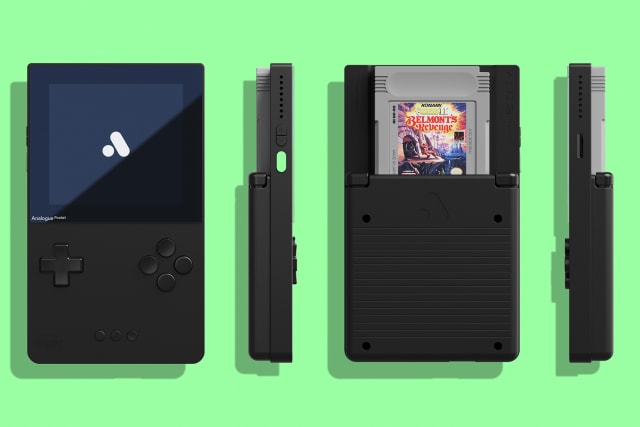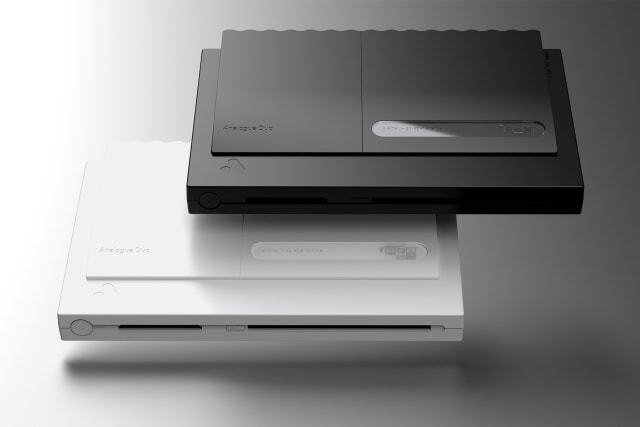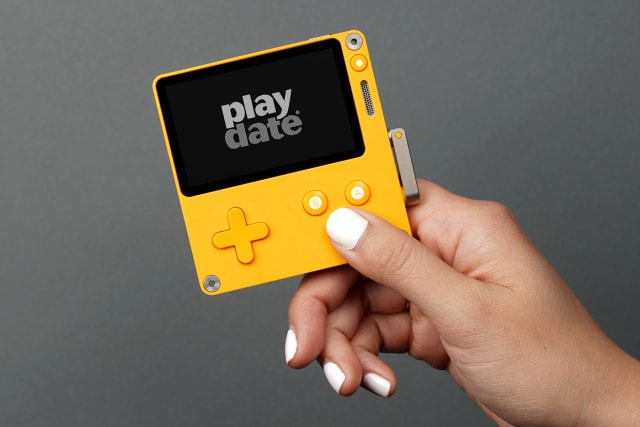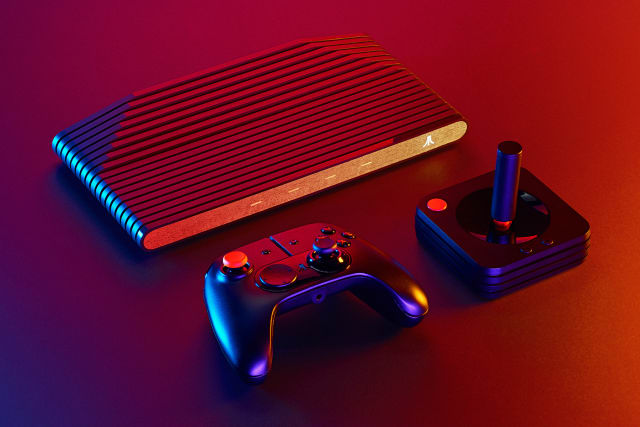Despite the pandemic, it’s been a pretty great year for video game hardware. Microsoft launched the Xbox Series X, a powerful obelisk packing a 12-teraflop GPU, and the smaller Series S, which can run games natively at 1440p resolution. Sony, meanwhile, released the PlayStation 5 and a cheaper Digital Edition that doesn’t come with a disc drive. Both companies are struggling with stock shortages at the moment and a number of user-reported hardware issues. Still, it’s a minor miracle that neither Sony nor Microsoft was forced to delay their next-gen launch. Countless ‘triple-A’ video games including Halo Infinite have been pushed back to 2021, after all.
The new hardware frenzy isn’t over, though. Far from it. A bunch of weird and hopefully wonderful consoles are scheduled to come out next year. They won’t have the power to match the PS5 or Xbox Series X. None of them will have new launch titles from major publishers like Ubisoft, Capcom and EA, either. Instead, they’ll be appealing to people who love retro classics and indie gems as much as the latest blockbuster. The sort that loves sifting through Itch.io and CRT TV listings on eBay. If you fall into that camp, read on for our shortlist of ‘alternative consoles’ due in 2021. We can’t guarantee that any of them will be good (just look how the Ouya turned out), but at least one of them could leave a smile on your face.
Analogue Pocket
At first glance, the Analogue Pocket looks like a new version of Nintendo’s iconic Game Boy Pocket from the mid-90s. And it is, kind of. The handheld accepts original Game Boy cartridges, but also those released for the Game Boy Color and Game Boy Advance. That means you can bounce between Pokémon Red, The Legend of Zelda: Oracle of Seasons and Advance Wars on the same bus journey. Analogue is also planning $30 adapters that will let you play Game Gear, Neo Geo Pocket Color, Atari Lynx, TurboGrafx-16/PC Engine and SuperGrafx games.

The Analogue Pocket is more than a ‘play everything’ machine, though. The handheld improves upon the original Game Boy design with two extra face buttons, twin shoulder buttons on either side of the cartridge slot, and three small system buttons. There’s also stereo speakers, a headphone jack and a 4,300 mAh battery that charges over USB-C. The 3.5-inch display has a 1,600 x 1,440 resolution, too, that should offer superior brightness and color reproduction. Finally, the company will sell a $99 dock that lets you play cartridge-based games on a TV.
The Pocket will also support Nanoloop, an application that musicians use to create chiptune music. The functionality could help justify the Pocket’s steep sticker price. At $199.99, it’s more expensive than Nintendo’s Switch Lite handheld. Some will argue that’s a steal, though, considering the screen and internal hardware required to run so many cartridge types. The first units are expected to ship in May 2021. Buying one could be a challenge, though: Analogue opened pre-orders last August and sold out within minutes, upsetting many hopeful customers.
Analogue Duo
The Pocket isn’t the only Analogue machine to support TurboGrafx-16 cartridges. Analogue is also working on a home console called the Duo. As the name implies, it has two slots for physical media. The one on the left is for HuCard cartridges — the format that the TurboGrafx-16 and PC Engine launched with — while the right accepts discs that were designed for the TurboGrafx-CD add-on. In addition, the Duo will support titles developed for the PC Engine SuperGrafx, a successor to the TurboGrafx-16 that was only released in France and Japan.

Like the Pocket, Analogue is using field-programmable gate array (FPGA) chips to read the original TurboGrafx-16, PC Engine and SuperGrafx games. That means the Duo acts like the original hardware and doesn’t rely on any software emulation or ROM files to work. There’s only one downside: Analogue hasn’t developed a chip to emulate the PC-FX just yet. If you want to play games from that particular system, you’ll need to look elsewhere. Still, it’s a beautiful console aimed at a small but passionate part of the community. (How many people collect TurboGrafx-16 games?) Analogue says the Duo will come out sometime next year for $199.
Playdate
Panic’s Playdate is a quirky little thing. It has a monochrome screen, unlike the Analogue Pocket, and a fold-out crank on the right-hand side. The latter isn’t there to power the device, thankfully. It’s a genuine control method, just like the D-pad and twin face buttons. Teenage Engineering, the company that designed the OP-1 synthesizer and Capcom-themed pocket synths, helped Panic dream up the undeniably cute hardware. It measures 74×76×9mm, which is smaller than the Game Boy Pocket and, therefore, far more portable than the Nintendo Switch and Switch Lite.

Panic is best known for its developer-focused Mac and iOS software, such as Nova and Transmit. The company has also published the occasional video game, including Firewatch and Untitled Goose Game. As Panic’s Greg Maletic told Engadget last year, the Playdate is meant to be a spiritual successor to Nintendo’s iconic Game & Watch series. It’s since morphed into something that sits between those devices and a more sophisticated handheld. Every Playdate is a devkit, for instance, and owners will be able to install third-party games directly on the system. “[Developers] won’t need to go through us,” Panic confirmed in a blog post last October.
The Playdate costs $149 and is expected to ship early next year. For that price, you get a ‘season’ of free games that are unlocked on a weekly basis. It was originally going to be 12, but the console’s protracted development has allowed Panic “to commission even more Season One games from more developers,” according to a blog post. A range of developers including Keita Takahashi, the creator of Katamari Damacy and Wattam, have confirmed that they’re working on Playdate titles. Panic has also shared a bunch of community prototypes including a Doom port.
Atari VCS
Atari isn’t the video game behemoth that it used to be. The company, best known for the Atari 2600 and classic titles such as Pong, was most influential in the 1970s and ‘80s. Since then, the iconic brand has been sold multiple times and struggled through bankruptcy. What remains of Atari hasn’t given up, though. The company is preparing an all-new system called the Atari VCS. The design is certainly Atari-like, with long idents along the top and, for at least one model called the VCS 800, a faux walnut finish on the front. The company has also made a retro joystick to accompany its take on a modern controller. Longtime Atari fans will also appreciate the Vault, a collection of classics that includes Asteroids, Breakout and Centipede.

The Atari VCS is more than a retro console, though. It’s a “fully-functional mini-PC,” according to Atari COO Michael Arzt, powered by an AMD Ryzen R1606G processor with integrated Vega graphics. By default, the console will run Atari OS, a version of Linux designed for the living room. You’ll be able to use “PC Mode,” however, to install and boot other operating systems such as Windows,Chrome OS and Valve’s Steam OS. Atari believes this model sets the console apart from cheaper Android-based alternatives. The VCS 800 can be a simple game console for the living room, but it can also be a semi-decent PC for browsing the web and accessing basic apps.
An Atari VCS 800 All-in Bundle, which includes a console, joystick and standard controller, can be pre-ordered for $389.99. That’s expensive: for $10 extra, you could buy a PlayStation 5 Digital Edition. The console was first revealed as the Ataribox at E3 2017. It was renamed in March 2018 and then crowdfunded on Indiegogo a couple of months later. Atari hopes to ship backer units and a small number of pre-orders before the end of the year. Full retail production won’t happen until January 2021, however. The VCS has been a long time coming and some people are understandably skeptical about Atari’s ability to deliver. The company is tiny, after all, and working on eyebrow-raising projects such as cryptocurrency and Atari-themed hotels.
Intellivision Amico
Atari isn’t the only retro brand attempting a comeback. A team led by Tommy Tallarico, an industry veteran that’s worked on over 300 games, is making a new Intellivision system. The Amico is meant to be a simpler system that anyone can play, regardless of their age or experience with video games. It comes with two controllers that have discs instead of D-pads, four shoulder buttons, a small touchscreen and everything required for basic motion controls. The console will come with six games and a bunch of downloadable extras that cost between $2.99 and $9.99, including an exclusive sequel to the beloved Earthworm Jim platformers.
The Intellivision team believes the casual market is woefully underserved at the moment. Modern games are too complicated, according to Tallarico, and don’t encourage people to play in the same room. The Amico will solve this with a game library that doesn’t include any violence, bad language or sexual content. There won’t be any loot boxes or microtransactions, either, so parents can have full confidence in what their children are playing. That’s the idea, anyway.

Like the VCS, the Amico is expensive. The tray-shaped system will cost around $249 at launch, which is only $50 short of the Nintendo Switch and Xbox Series S. (You could also argue that the Switch serves a similar need for family-friendly gaming.) Still, there’s a group of people who grew up in the 1980s and remember the Intellivision name with fondness. For those people, the curated library and simplistic controllers might be enough to justify the asking price. Tallarico’s team was originally targeting an October 2020 launch, but that date has since been pushed to next May. If the timing lines up, we could have an Atari and Intellivision rematch on our hands.
Switch Pro
We can’t end this list without giving the long-rumoured Switch Pro a mention. To be clear, Nintendo has never confirmed the console’s existence. Bloomberg reported in August that the company was planning to launch an upgraded Switch next year, though. According to unnamed sources, the company has considered a more powerful model that can support 4K visuals. It could replace the standard Switch — which has already received a minor revision, upping the battery life slightly — or sit alongside it. There’s no guarantee that a Switch Pro will happen, though. Nintendo has performed incredibly well during the pandemic and sold a staggering number of consoles over the last three quarters. Still, a Switch sequel could help maintain that incredible momentum next year.
https://ift.tt/3mYSLqJ
Technology
Bagikan Berita Ini














0 Response to "2021 could be a great year for 'alternative' consoles - Engadget"
Posting Komentar